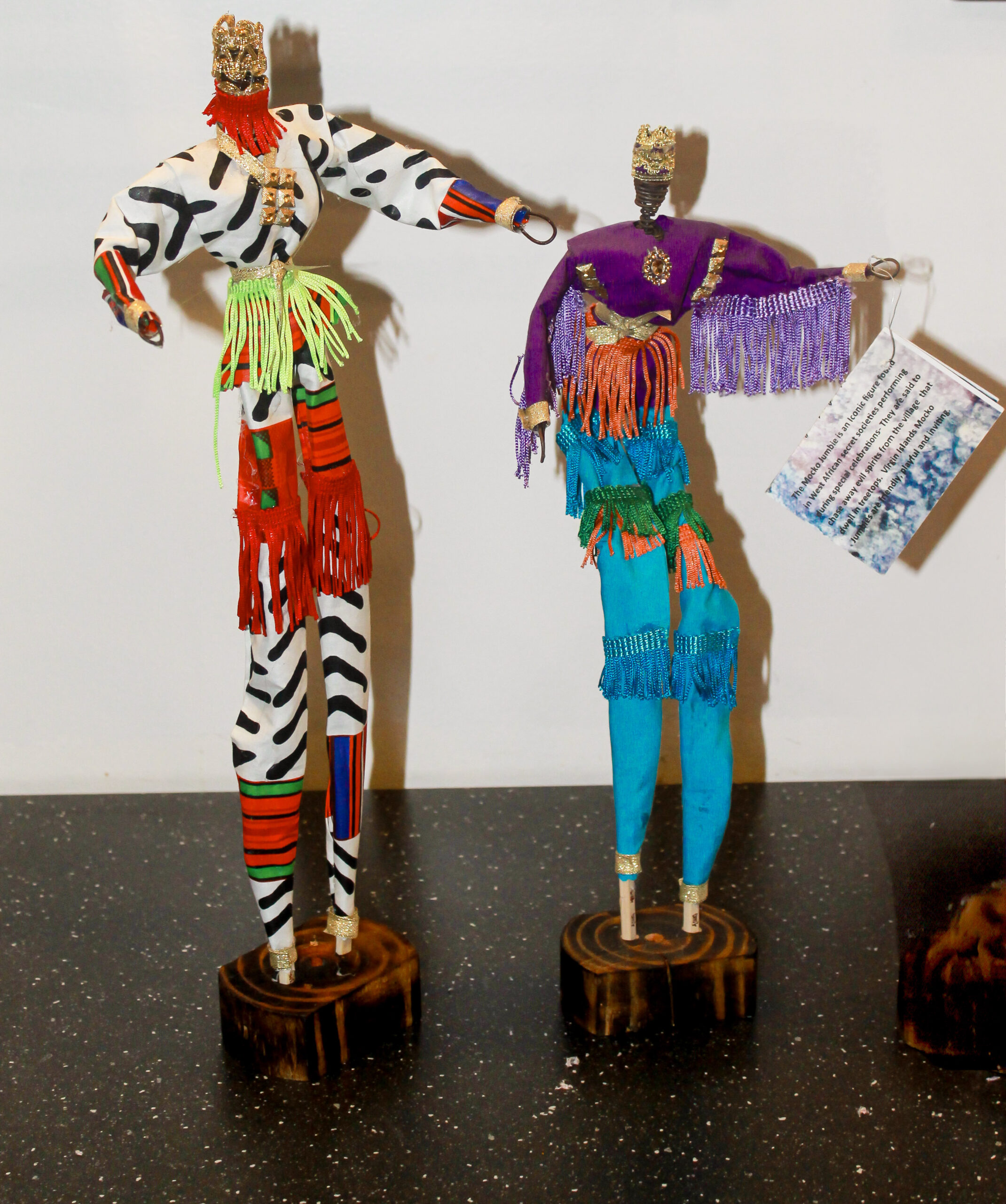
Originating in Africa, the moko jumbie was introduced to the Caribbean in the 19th century and has become deeply rooted in V.I. culture and lore. Edney Freeman, a sculptor by trade, has kept the spirit of the jumbie alive through his art.
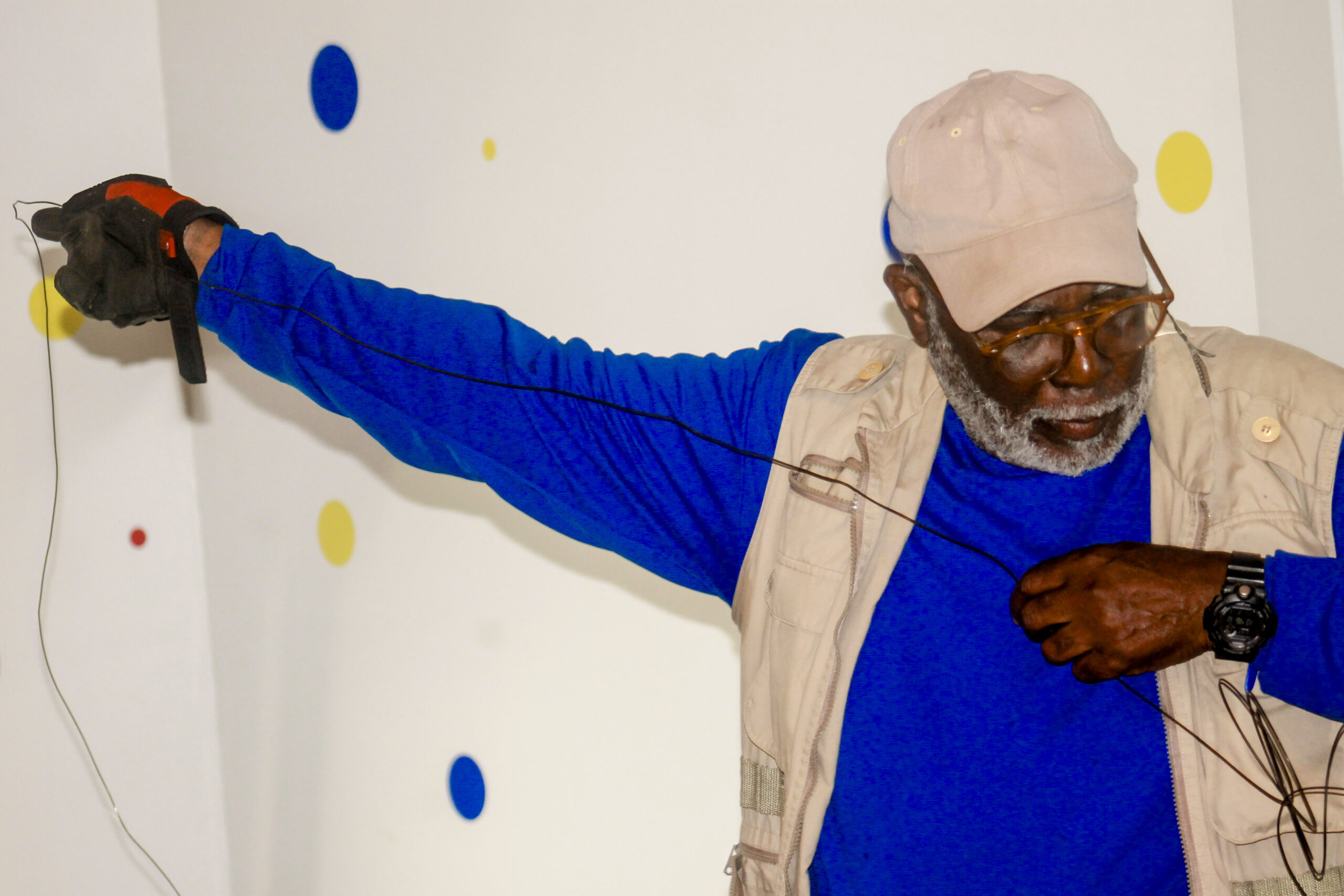
Freeman, known for his large sculpture displays of the moko jumbies at Yacht Haven Grande, a tourist attraction, is also dedicated to preserving V.I. culture. He continues his work by educating the public on how to build their own representations of the moko jumbie through miniature wire figure classes.
Freeman has been sculpting for 32 years and is a retired art teacher from Charlotte Amalie High School. “I discovered that there was life beyond retirement,” said Freeman.
He discovered his love for this art form around 2014 and 2015 when he initially started making white clay dolls. “When I was a teacher at Charlotte Amalie High School, I used to participate in the WICO Christmas shows and display my white clay figures. There was a time I used to make moko jumbies with no clothes until a local pointed out that my moko jumbie was naked and needed clothes. I laughed and said, ‘Now that’s an idea.’”
Freeman has explored other areas of art, including clay figures, jewelry, and large figurative sculptures. Among these, the creation of the jumbies has endured the longest. The process of sculpting the wire figures is very detailed, and with enough practice, it can take 12 to 15 minutes to complete a figurine.
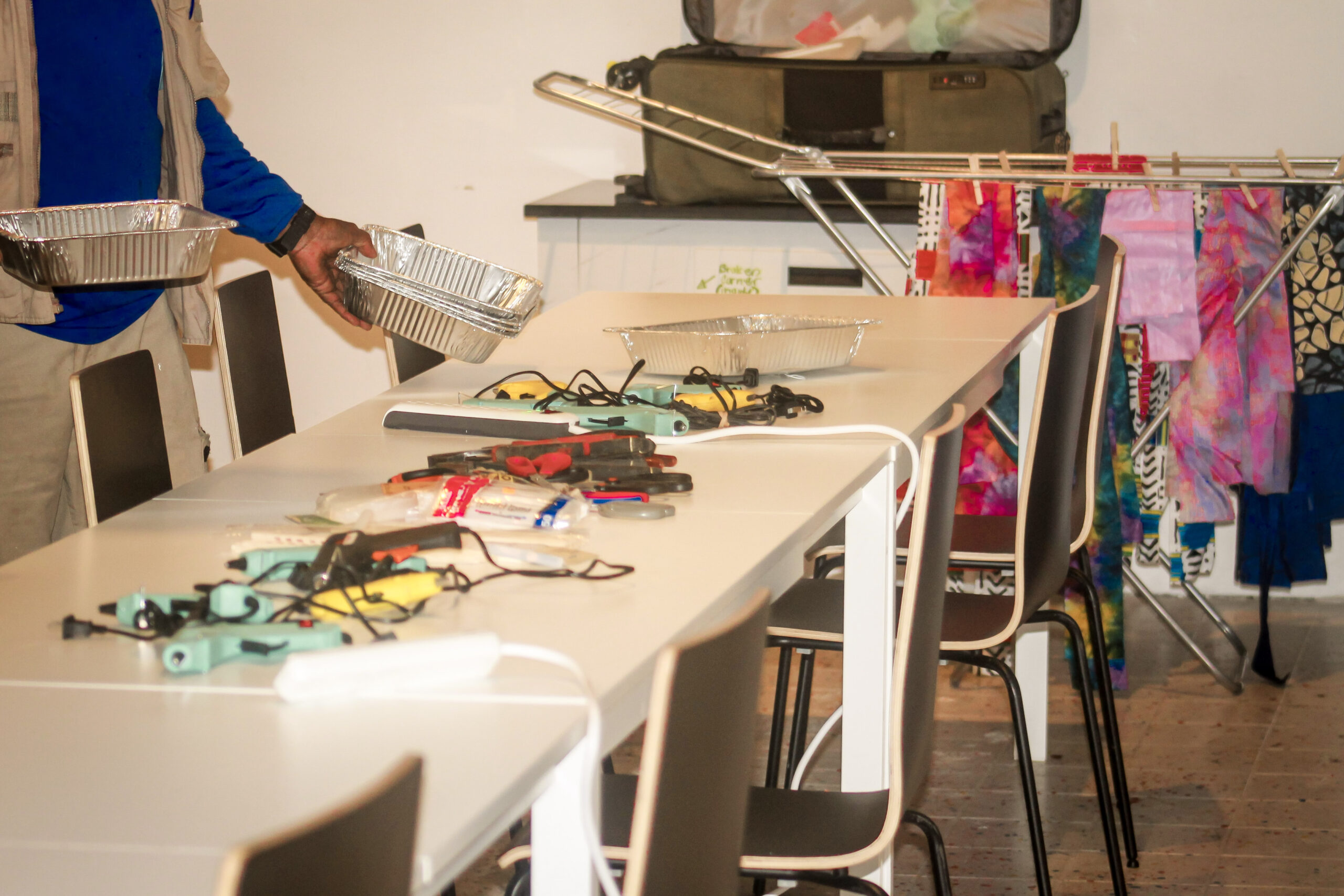
“The technique I use is very particular, so it’s important for people learning to pay attention and have patience. There will be a chance for individual creativity,” Freeman said.
The moko jumbie cultural class took place at the Virgin Islands Children’s Museum and was attended by young adults and older participants. Freeman provided each participant with a completed wire figurine as he demonstrated how to make them. The supplies needed are wire, a wooden base, chopsticks, a hot glue gun, fabric cloth, an iron, scissors, and extra gold trimming and frills to accessorize.

Freeman began the demonstration by measuring multiple sections of wire with his arm until he reached 10 feet. He started by crafting the first loop, forming the moko jumbie’s head, then added several other loops for the shoulders, torso, and eventually the legs.

Freeman emphasized the importance of wearing gloves to avoid leaving residue from the wire on the fingers while bending and forming the loops.
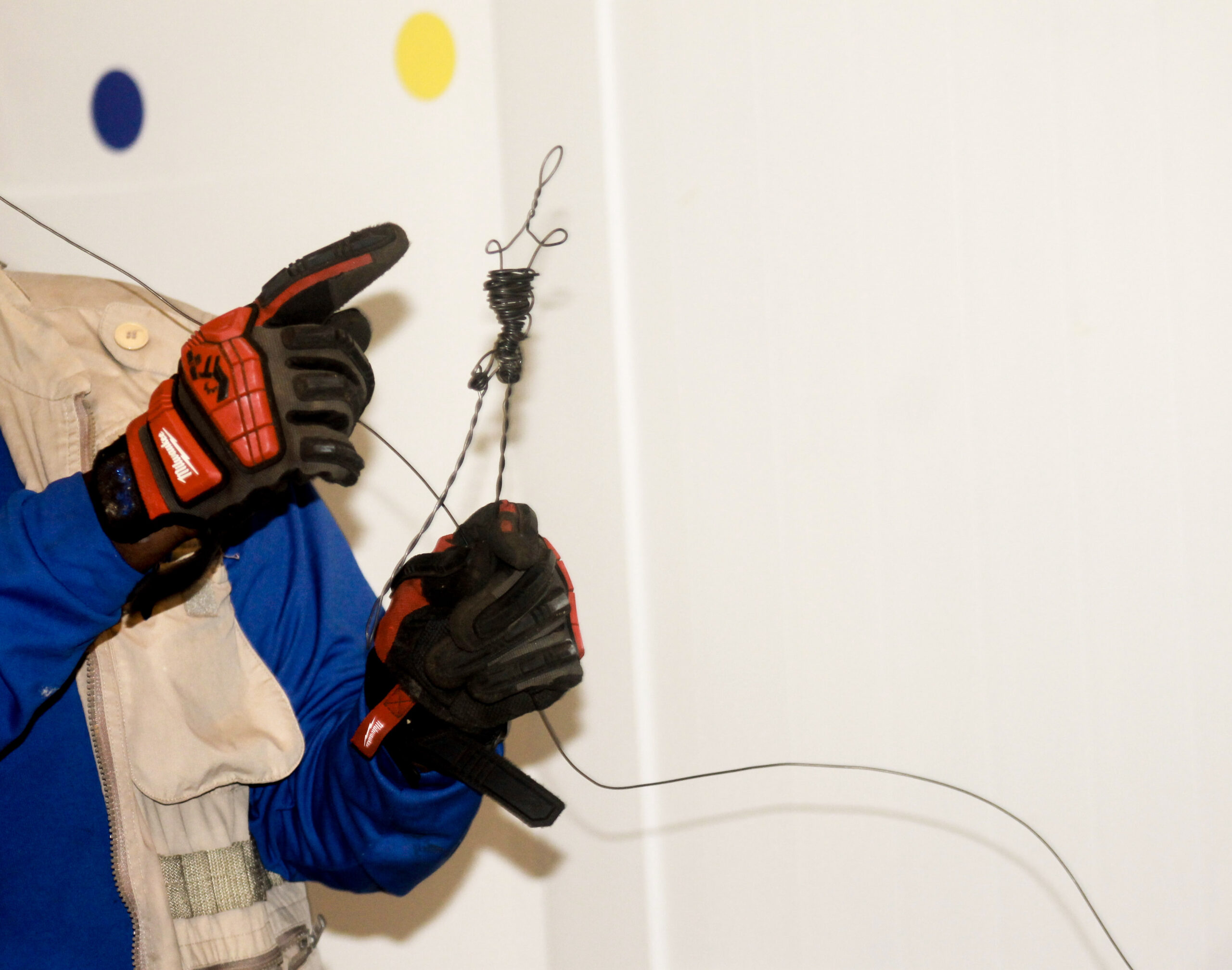
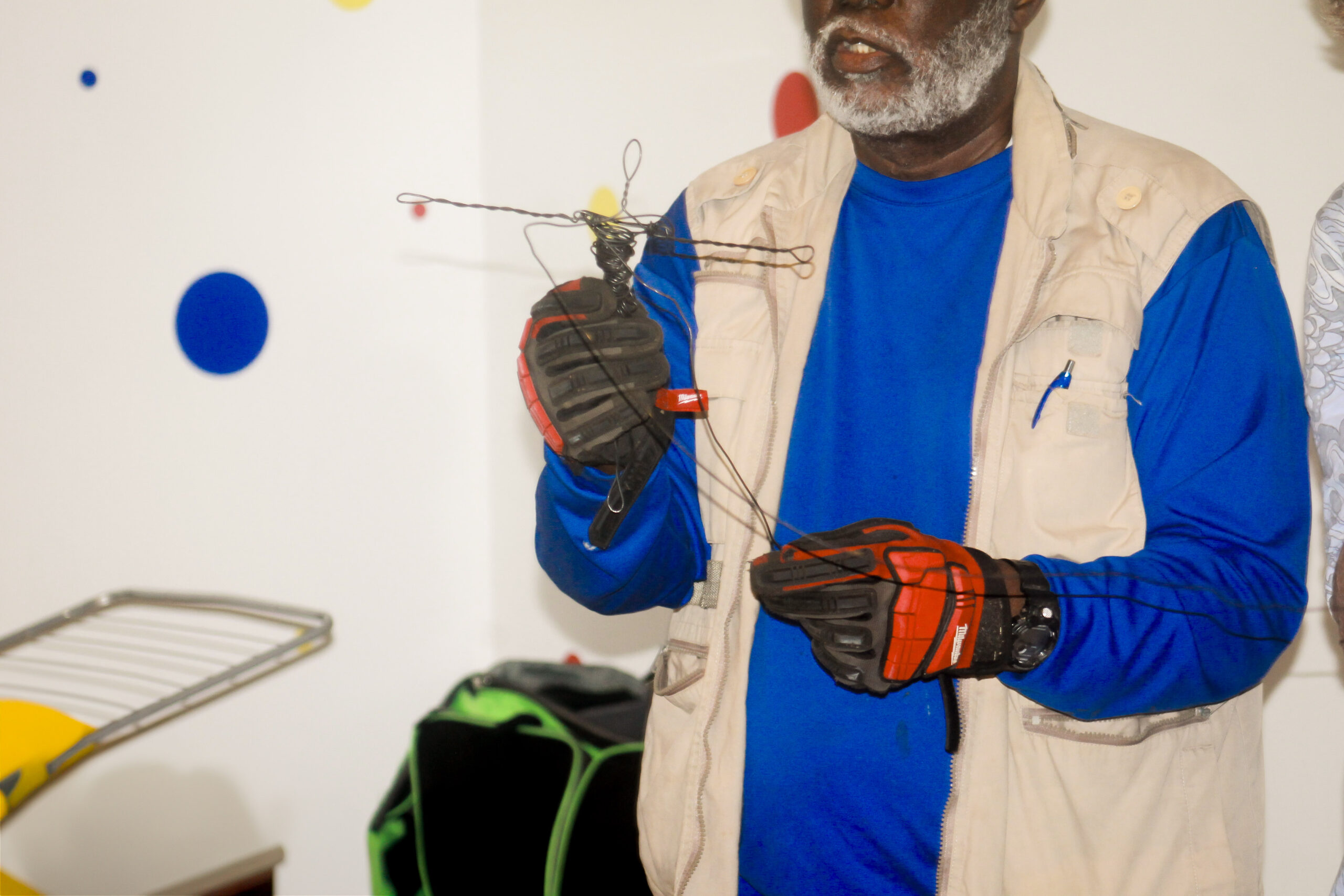
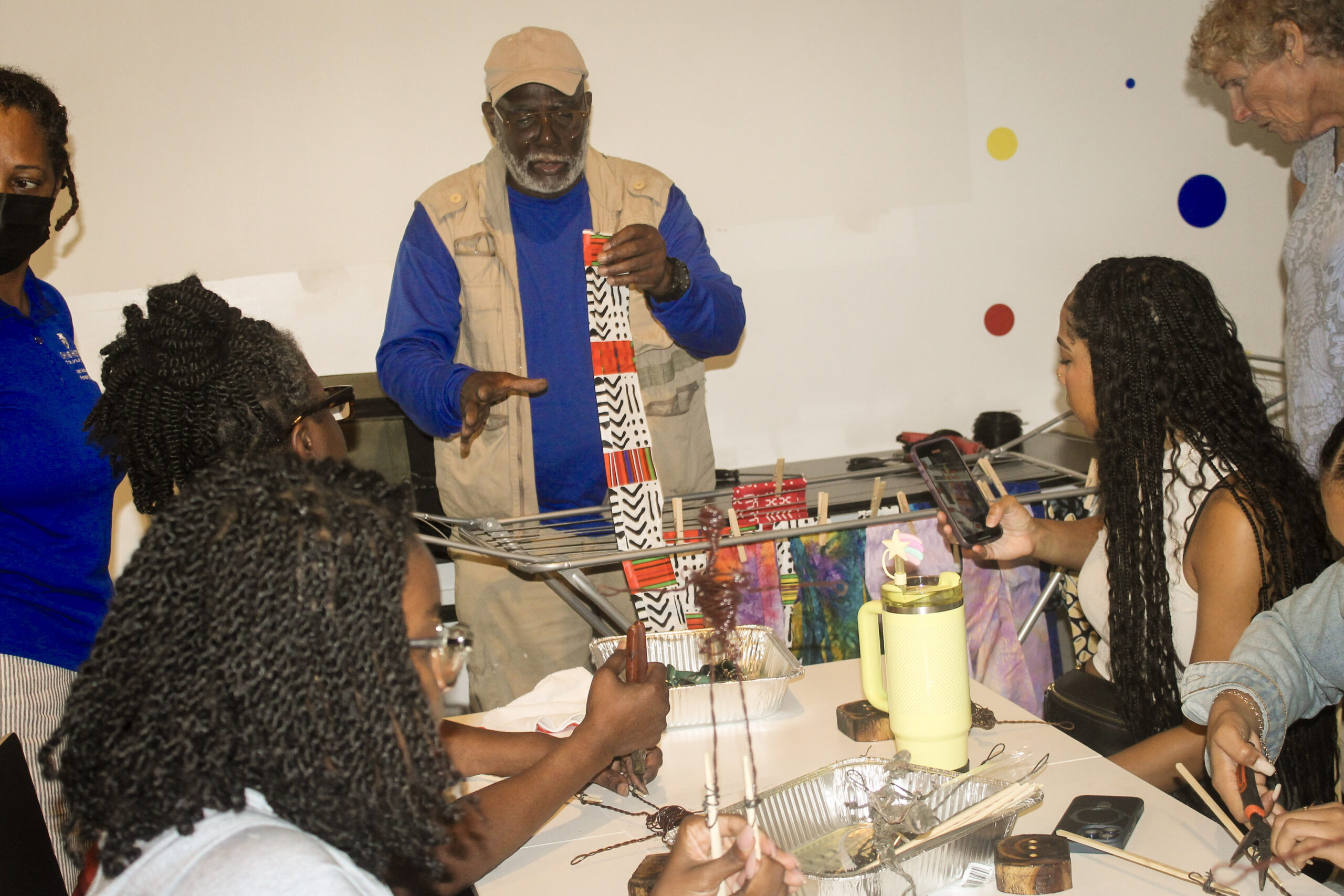
Once the body of the moko jumbie was formed, participants were instructed to pick out printed fabric to dress their figurines. They ironed the fabric to ensure it would layer smoothly on the metal. After ironing, the fabric and accessories were carefully glued together using the hot glue gun. The vibrant kaleidoscope of colors added personality to each wire moko jumbie.
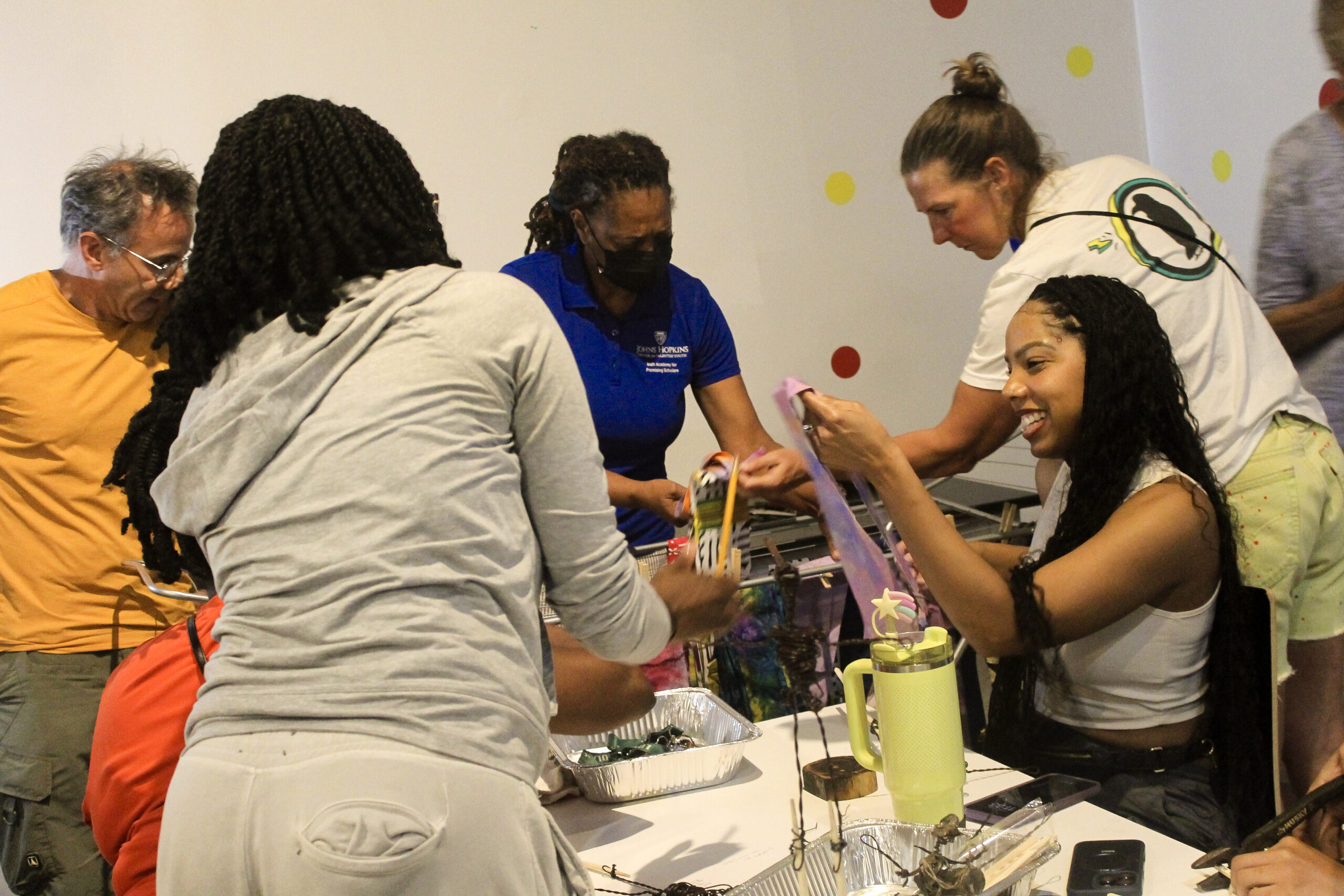

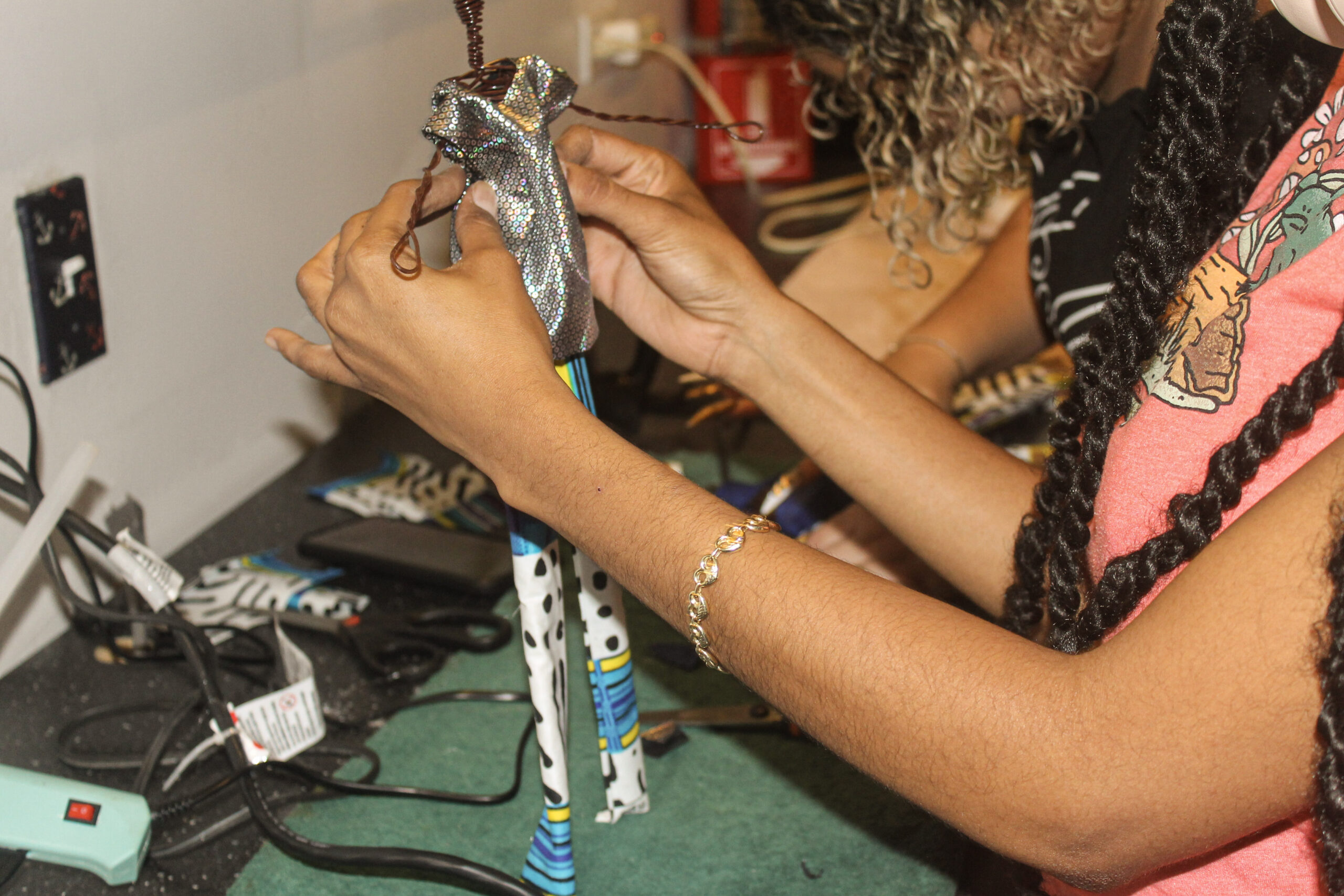
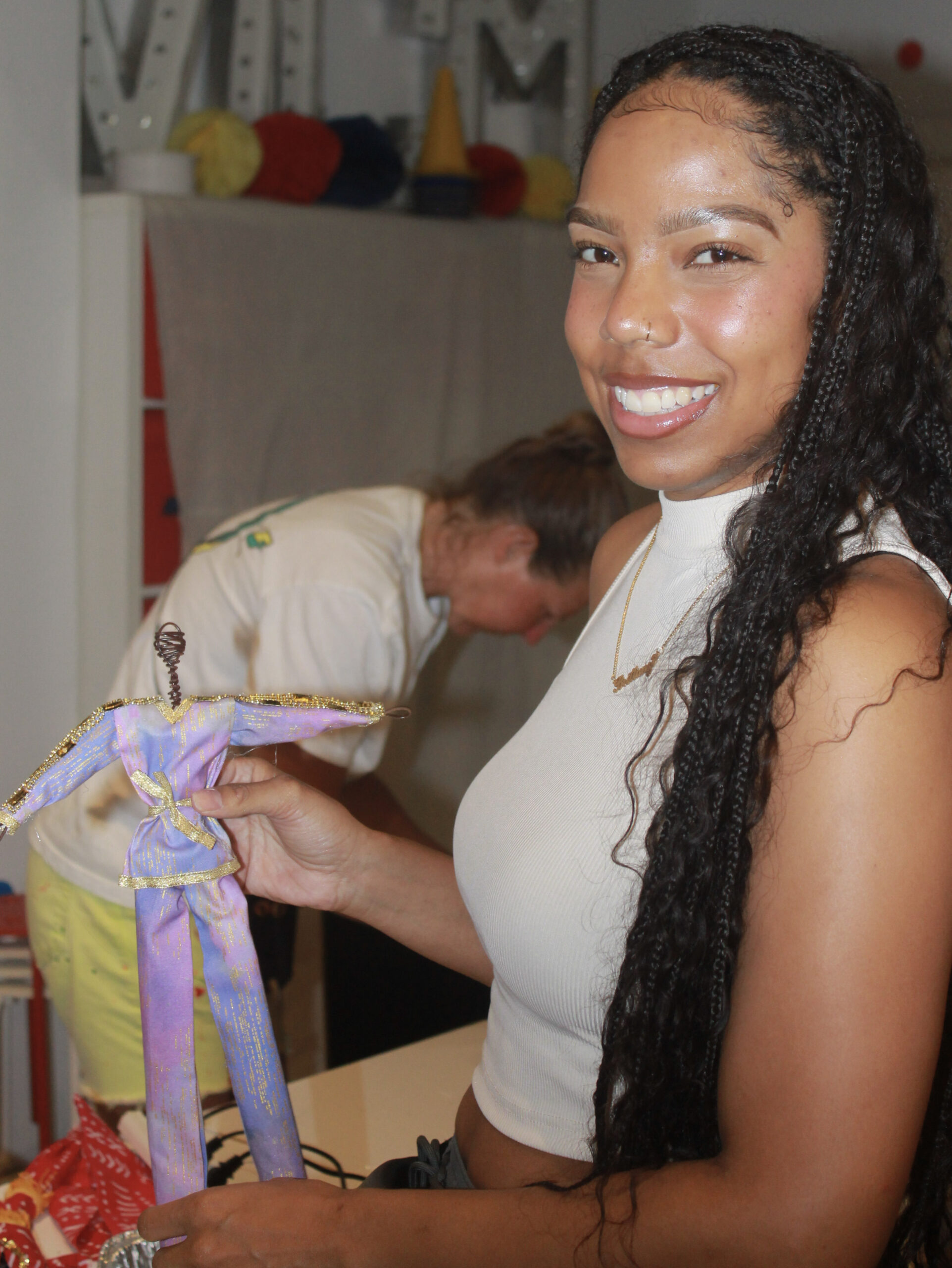
Each moko jumbie reflected the participant’s persona; some jumbies held lollipops, while others held the native V.I. flag. “I loved the art I created in the past, but I am currently focused on making my art public and presenting it in public spaces,” Freeman said.
